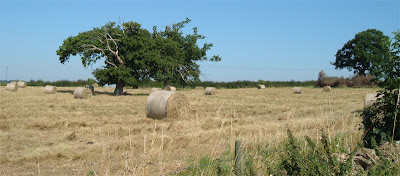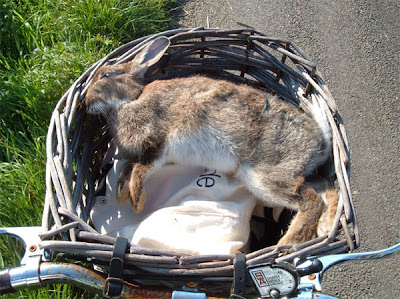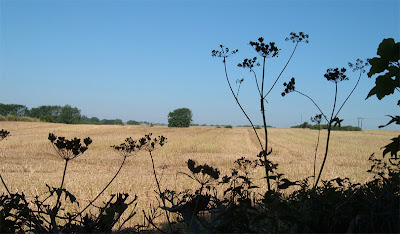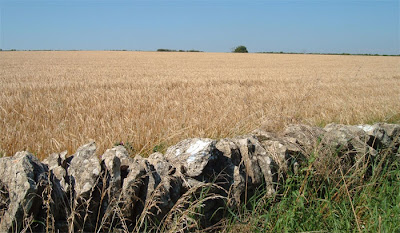This post has been written in response to a query from our correspondent. An answer would have taken up the entire space of my next “gleanings,” and I decided not to wait a whole month.
The post Our habitat: booth appeared first on OUPblog.
This post has been written in response to a query from our correspondent. An answer would have taken up the entire space of my next “gleanings,” and I decided not to wait a whole month.
The post Our habitat: booth appeared first on OUPblog.
A dwelling is, obviously, a place in which someone dwells. Although the word is transparent , the verb dwell is not. Only its derivation poses no problems. Some verbs belong to the so-called causative group. They mean “to make do or to cause to do.” Thus, fell is the causative of fall (“to cause something or somebody to fall”). Similar relations connect sit and set and (for those who still differentiate them) lie and lay. With time, the senses and the phonetic shape of the primary and the causative verb may drift apart. For example, today no one will guess that drench is the causative of drink; yet once we know their history, we understand how drench can be understood as “cause to drink.” Such pairs of verbs exist in all the Indo-European languages: compare German fallen ~ fällen, sitzen ~ setzen, liegen ~ legen (they correspond to the English verbs given above), and trinken “drink” ~ tränken “soak, imbue, saturate.”
There once existed the Germanic verb dwelan with short l “to err” (only prefixed forms have been recorded) whose causative partner was dwaljan. By regular phonetic change it became dwellan (with e from a and long l). It should have meant “to make one err,” but it meant much more. In Old English, as in the other West Germanic languages, the only recorded senses of dwellan and its cognates were “tarry, linger, delay” and especially “lead astray,” and those senses are compatible with “err,” but “abide, stay, reside,” known to us from Modern English, is not. It was borrowed from Scandinavian. However, the Scandinavian sense also goes back to early times, and the natural question is how “stay put” and “lead astray” could coexist in one and the same word. In addition to dwellan, Old English had dwolian “wander,” gedwolen “perverse” (ge- is a prefix), and dwola “error; heretic.” The OED lists dwale “error; fraud; a soporific drink,” dwalm “confusion,” and dwelling “delay,” all hopelessly obsolete, though the verb dwalm ~ dwam “to swoon” still exists in Scots and in northern English dialects (see the brief discussion of dwalm in the recent post on qualm); only dwale “deadly nightshade” is a bona fides plant name.
Attempts to explain the puzzling semantic history of dwell have not been numerous. The regular readers of this blog know that I often praise the etymology in The Century Dictionary and in Henry Cecil Wyld’s The Universal Dictionary of the English Language. In the entry dwell, the first of them lists multiple forms but stops at explaining their complexity. By contrast, Wyld offered an ingenious hypothesis. I’ll discuss it below, even though, in my opinion, there is a better one. Before turning to it, I should only say that shortcuts are of little help in this case. For example, Ernest Weekley, despite his excellent feel for semantics, made do with the following statement: “…dwellan, originally transitive, to lead astray, hinder, make ‘dull’; then linger, tarry (cf. dwell upon a subject), hence, to live.” This is fine, except for the main trouble: how exactly do we get from “lead astray” to “hinder” and further to “linger” and “live”? Semantic bridges are easy to construct but dangerous to cross. In the history of meaning, we have guidelines rather than formulas, which are so helpful in the history of sounds. By trotting gingerly one can get from any point to almost any other, for instance: “white”—“shining “—“dazzling”—“blinding”—“black.”

Dull, mentioned by Weekley, is indeed related to dwell (w was lost before u), and its modern sense “tedious, boring” goes back to “stupid.” This is not surprising, for in some contexts dull is the opposite of “bright” and “sharp”(as in dull light, dull sound). Bright and sharp people are smart, while those who are dull are not. English also has dullard “stupid person,” possibly a borrowing from Middle Dutch (Merriam-Webster online give a delightful example: “The company is run by a bunch of dullards”; apparently, such was the first context that occurred to the editors—that it should come to this!). The situation in other Old Germanic languages is similar: Gothic had dwals “foolish” and German has toll “mad.” According to Wyld, along the way from “go astray” to “tarry” the sense “wander” can be reconstructed. The connecting link between that of “wandering” and “dwelling,” is allegedly “hinder, delay”: “…’to wander, having lost one’s way; to linger, delay, in doubt which way to go’, and finally, ‘to remain where one is’.”
Wyld realized that simply moving from one sense to another by imperceptible steps is a risky procedure and referred to the Classical Greek tholos “sepia” (it has been attested with stress on either syllable) and a related Greek adjective meaning “muddy, troubled.” On the strength of those words, he assigned to the root dwal- ~ dwel- the meaning “go in the dark.” The sense “obscure, dark, lacking clearness,” Wyld said, could develop into both “delay” and “folly.” I have nothing but admiration for this reconstruction, especially because most other sources don’t bother to discuss the semantic history of the verb dwell, but Wyld’s reference to Greek is, to use the polite jargon of scholarship, less than fully persuasive. A somewhat questionable cognate from a non-Germanic language carries little conviction, the more so as the Sanskrit cognate points to “bend,” rather than “dark.”

In my opinion, the famous German dialectologist and lexicographer August Lübben had a more realistic idea. He developed it in an 1871 article devoted to the enigmatic Middle Low (= northern) German legal term altvile (plural; much more probably, al-tvile than alt-vile), and it would have been short of a miracle if Wyld had known that article. I ran into it while investigating the etymology of the noun dwarf, so more or less by chance. Lübben showed that some of the words clustered round Middle High German twellen (West Germanic d became t in German: compare Engl. do and German tun) once seem to have meant “move in a circle.” To be sure, a person moving in a circle gets nowhere (is delayed) and labors under the illusion of making progress (is led astray). Lübben was interested in showing that altvile meant feeble-minded people, “totally deranged” (al- is a reinforcing prefix), but our concern is with the verb dwell. If its protoform referred to running stupidly in a circle and thus both moving and staying in the same place, it follows that Old Scandinavian used one interpretation of the verb (“tarry, linger”), while West Germanic used the other (“be led astray, be stupefied”).
As noted, English dwell took over its present day meaning from Scandinavian; the borrowing goes back to the Middle period. The root of dwel- ~ dwal- meant “dimwitted, dumb,” as also explained above.
Quite naturally (in light of the history of the verb dwell in English), the noun dwelling does not antedate Middle English either. We observe that this noun has never become a true synonym of home or even house. It is still a formal word signifying a place of residence. When a borrowed synonym begins to compete with native words, the intruder usually carves a “niche” (do you pronounce it as nitch?) for itself unless it succeeds in destroying and ousting old-timers. Such things happen, but we won’t dwell on this depressing subject. There are enough sad things happening in the world without our contributing to the global freeze.
Image credits: (1) Blind-Man’s Buff, published by Paul Jarrard & Sons (London, England). Public domain via Wikimedia Commons. (2) Beehive hut, Dingle Peninsula, Co. Kerry, Southern Ireland. Photo by Dirk Huth. CC BY-SA 3.0 via Wikimedia Commons.
The post Our habitat: dwelling appeared first on OUPblog.
Okay, drum roll please...
I have just finished the nine millionth draft, read, re-read, read some more, walked around my very small study, bumping into furniture having a final read.
Listened some more to this...
WARNING






Woohoo, good luck!
Okay, now I need to work on my Harvest Hills story. You have inspired me!
Best of luck! Here's hoping you make it on in there while I sit on the sidelines, reading all the better pieces. ;)
Good luck with the sub. Hope it all works out.
Thanks guys - and good luck with your submissions.
Good Luck!
congratulations!
Fingers crossed for you! (& hope you weren't injured in any way?)